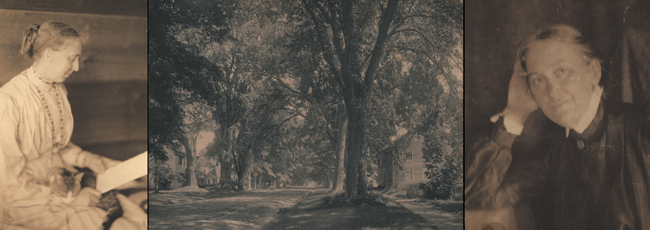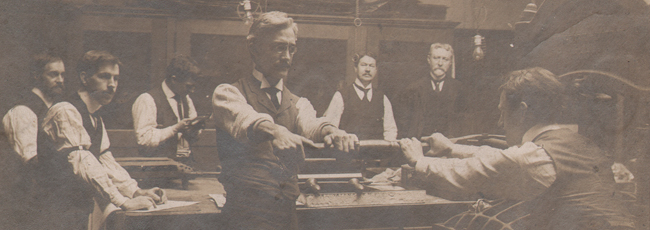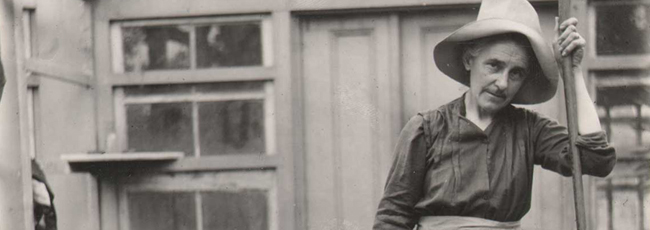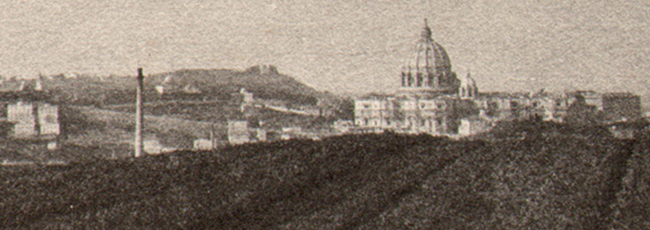A collection of (mostly) summertime views from the archive to whet your appetite for a Sea & Shore pilgrimage. Let our collection of lighthouse images guide the way…
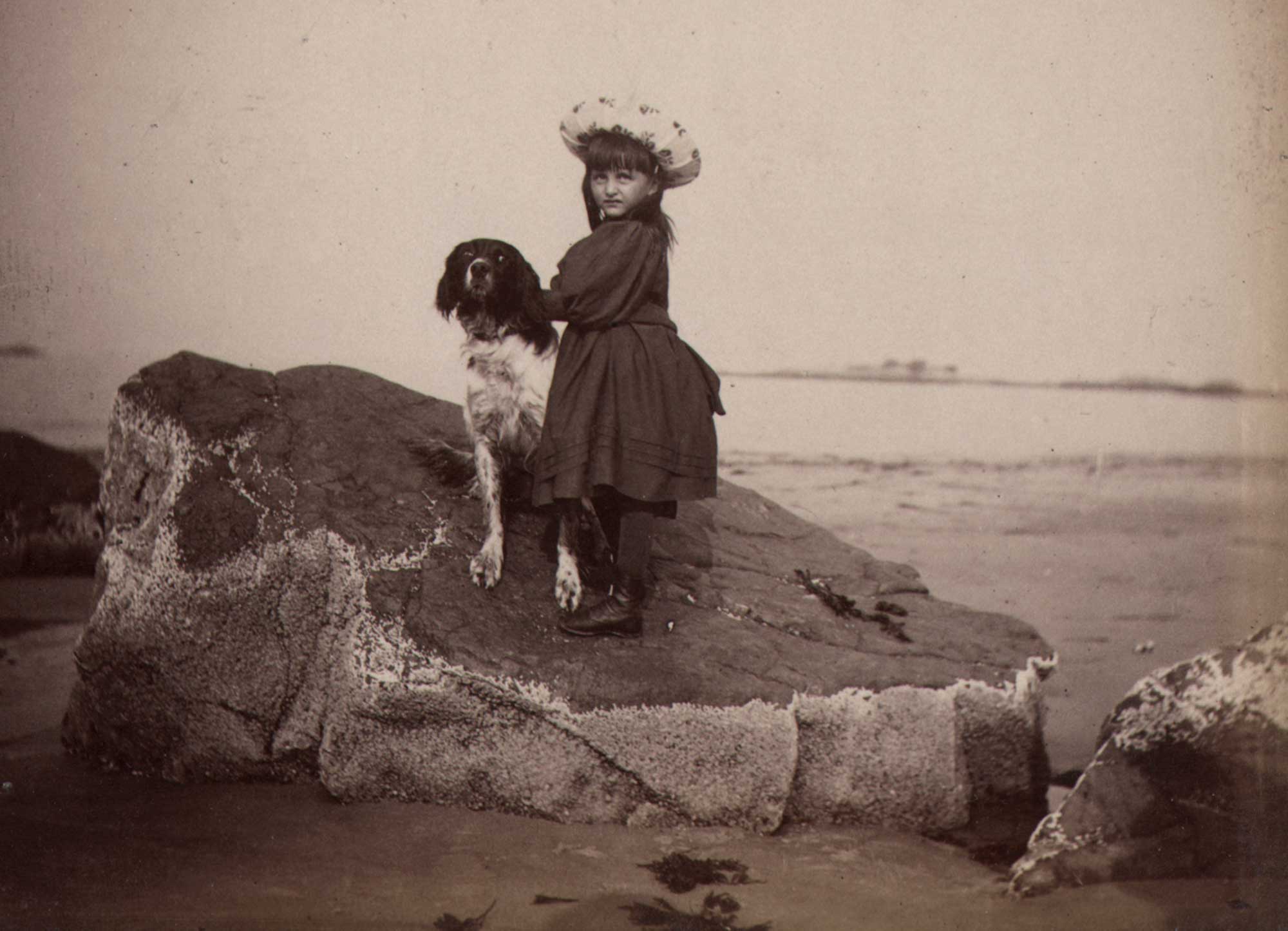
“A Girl & her Dog at Riverside”, 1887, gelatin silver print, Susan Higginson Bowditch Long, American: 1857-1935: 9.7 x 12.2 cm. The subject of this charming shoreline view may be the artist’s first born child: Helen Bowditch Long Patterson, 1881-1956, who stands patiently with her spaniel atop a barnacle-encrusted boulder. From a series of candid photographs believed to have been taken by the artist compiled in a late 19th Century album bearing the armorial bookplate of her spouse Harry Vinton Long, 1857-1949. Long attended the Massachusetts Institute of Technology from 1876-77 and she later worked closely in 1909 with the Olmstead Brothers- successors to famed landscape architect Frederick Law Olmstead Sr.- in designing the extensive gardens for her family’s summer estate on Little White Head Island at Cohasset, MA. From: PhotoSeed Archive
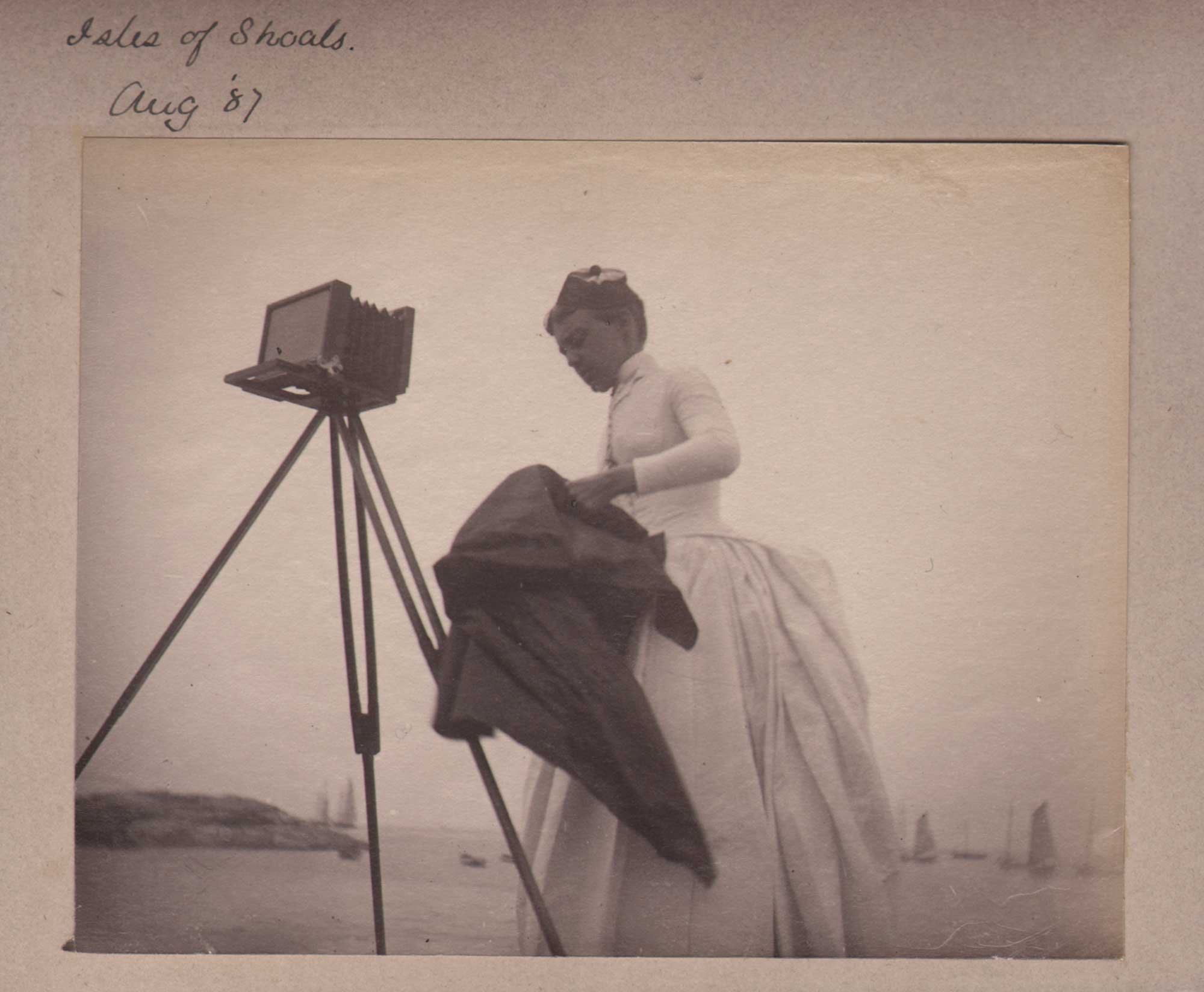
“Isles of Shoals, August 1887: Susan Higginson Bowditch Long & Camera” 1887, gelatin silver print, unknown American photographer: 8.9 x 11.4 | 11.5 x 13.7 cm. The photographer Susan Long holds a dark cloth while preparing to take photographs with her tripod-mounted plate camera on one of the islands of the Isles of Shoals, a group of small islands and tidal ledges located approximately 6 miles off the east coast of the United States between the border of Maine and New Hampshire. A line of sailboats are seen on the horizon behind her. From a series of candid photographs believed to have been taken by the artist (this by an unknown artist-probably a family member) compiled in a late 19th Century album bearing the armorial bookplate of Long’s spouse Harry Vinton Long, 1857-1949. Long attended the Massachusetts Institute of Technology from 1876-77 and she later worked closely in 1909 with the Olmstead Brothers- successors to famed landscape architect Frederick Law Olmstead Sr.- in designing the extensive gardens for her family’s summer estate on Little White Head Island at Cohasset, MA. From: PhotoSeed Archive
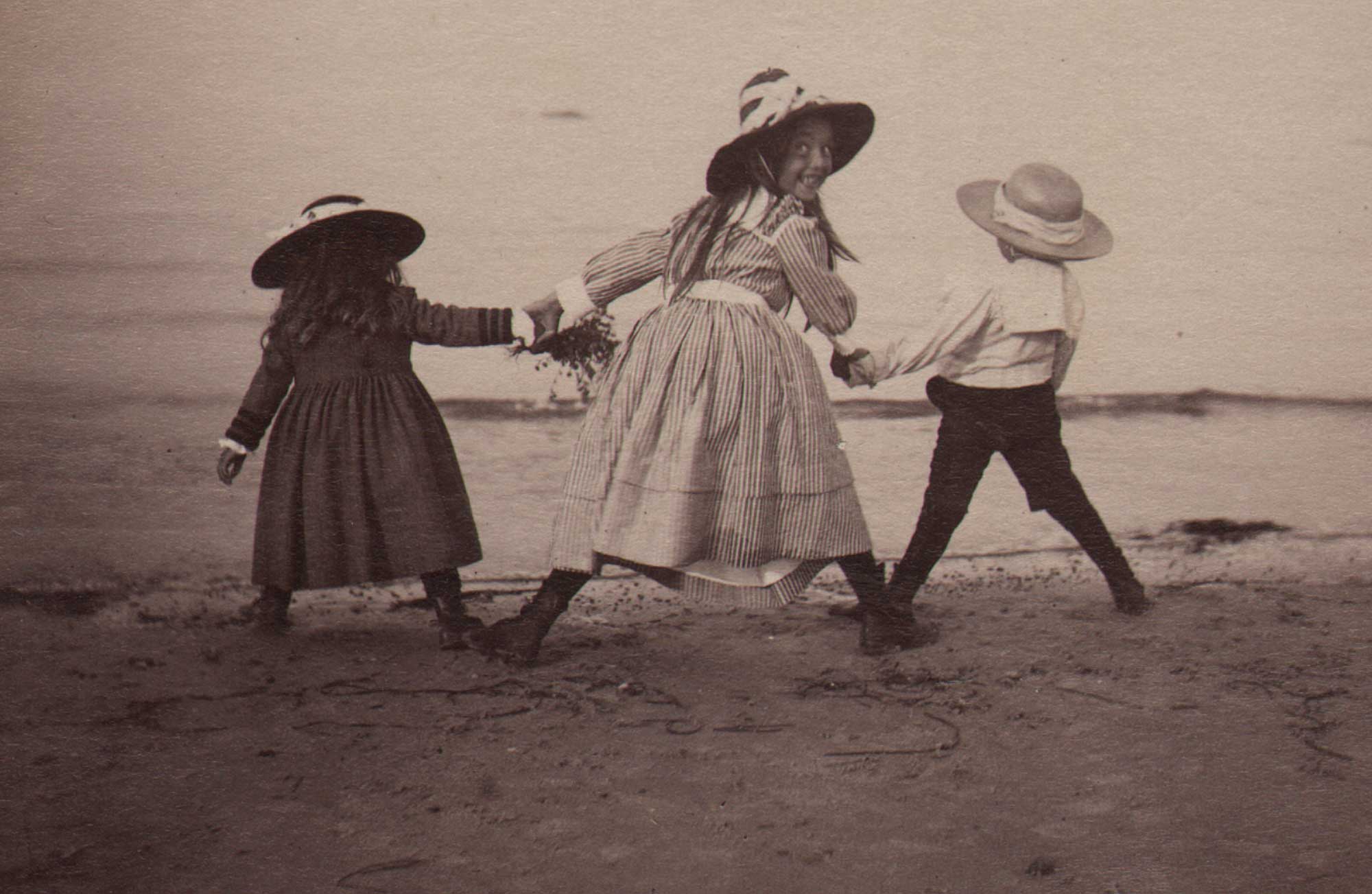
“Children Play at Spot Pond, July 10, 1887”, gelatin silver print, Susan Higginson Bowditch Long, American: 1857-1935: 9.4 x 12.1 cm. Striking a grin and looking back towards the camera at center of this hand-holding trio may be the artist’s first born child: Helen Bowditch Long Patterson, 1881-1956. Actually a lake, Spot Pond is located “in Middlesex County, in the U.S. state of Massachusetts. The pond is within the Middlesex Fells Reservation, a Massachusetts state park. It is almost entirely located within the boundaries of Stoneham, Massachusetts. Spot Pond was named in 1632 by colonial governor John Winthrop.” From a series of candid photographs believed to have been taken by the artist compiled in a late 19th Century album bearing the armorial bookplate of her spouse Harry Vinton Long, 1857-1949. Long attended the Massachusetts Institute of Technology from 1876-77 and she later worked closely in 1909 with the Olmstead Brothers- successors to famed landscape architect Frederick Law Olmstead Sr.- in designing the extensive gardens for her family’s summer estate on Little White Head Island at Cohasset, MA. From: PhotoSeed Archive
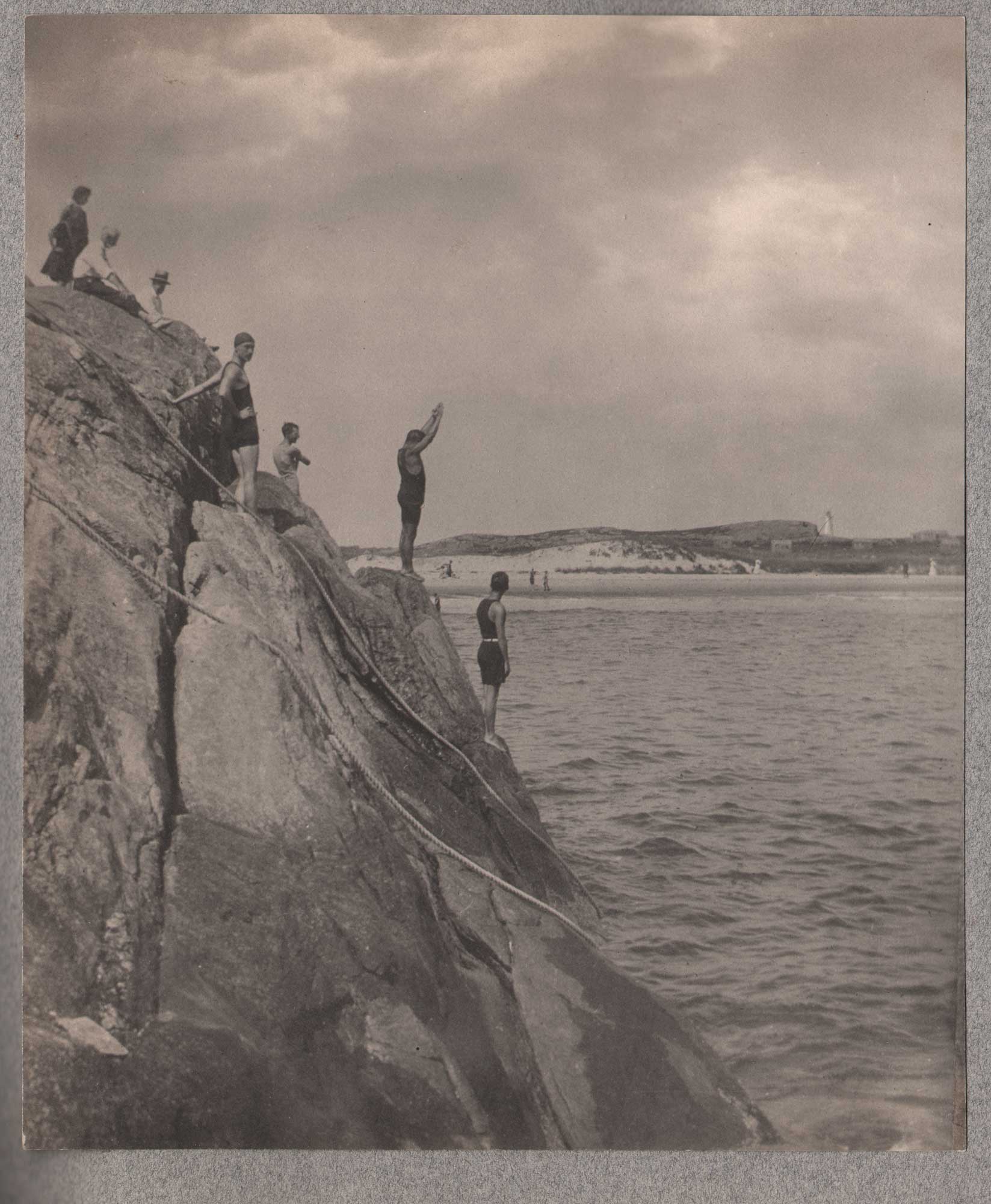
“Diving Rock, Warrens Point, Little Compton, Rhode Island”, 1906, album-mounted platinum print, Alfred Wayland Cutting, American, 1860-1935, 23.0 x 19.0 | 27.8 x 34.5 cm. A diver at center prepares to launch himself off this rock outcropping at Warrens Point, with the beach in the background. Guide ropes attached to the rock face aid those who want to ascend more easily from the water. Location derived from an rppc held by the Little Compton Historical Society. From: PhotoSeed Archive
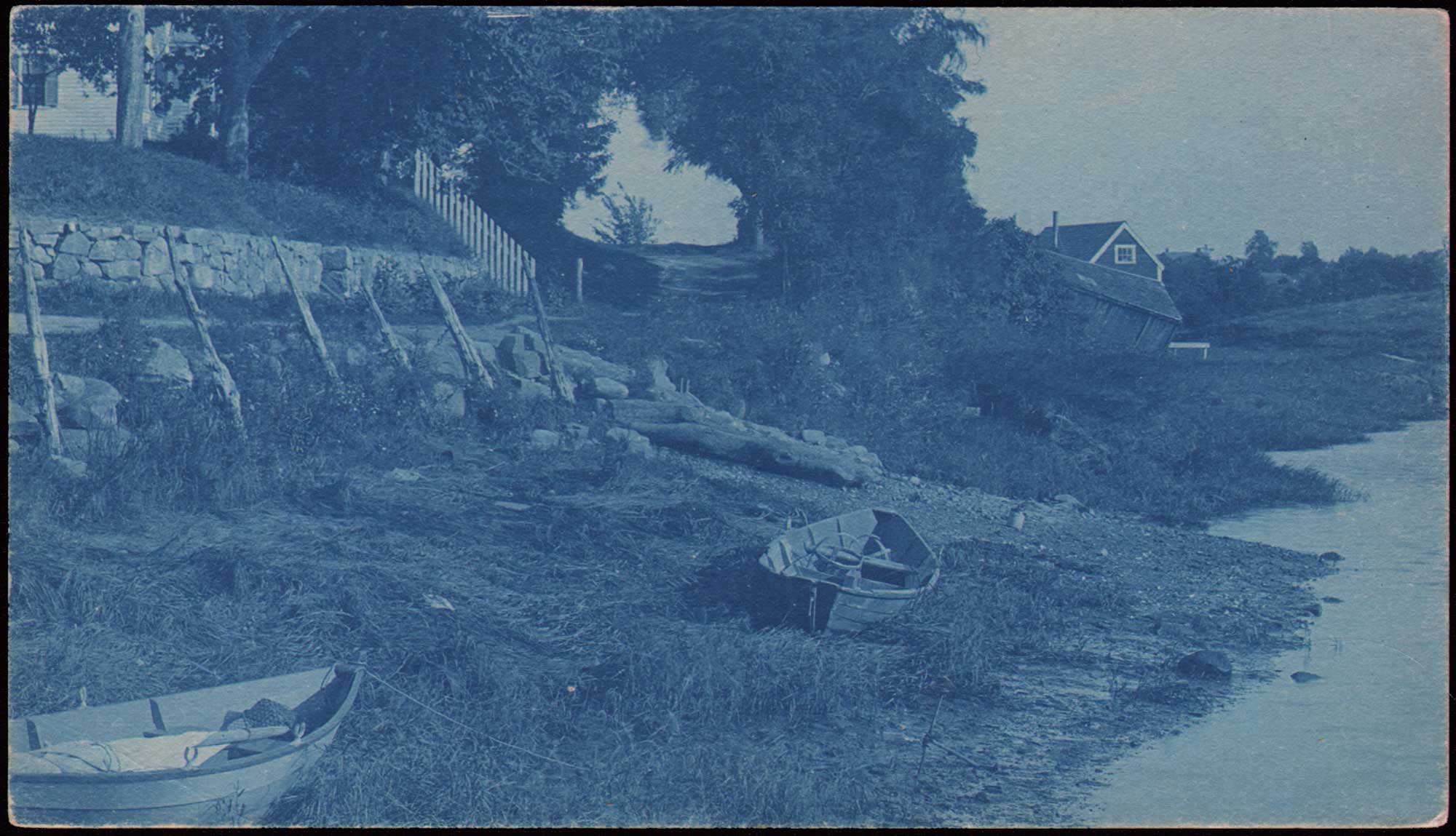
“Dories at Low Tide: Ipswich River”, ca. 1895-1905, unposted cyanotype postcard, George G. Dexter, American, 1862-1927, 7.9 x 13.8 cm. A contemporary of famed Ipswich artist Arthur Wesley Dow, who also employed the cyanotype process taken during the 1890’s, Dexter was undoubtedly influenced by him, and both took photographs of boats like these along the Ipswich River. In the 1896 edition of the Directory of the The Town of Ipswich, he took out an advertisement proclaiming himself “Dexter The Photographer”: “The facts that we always guarantee perfect satisfaction, are willing to devote enough time to each sitting; to secure the best results; have one of the most throughly (sic) equipped studios in the state and are always Up-to-Date with new styles, account for our continued increase of work.” From: PhotoSeed Archive
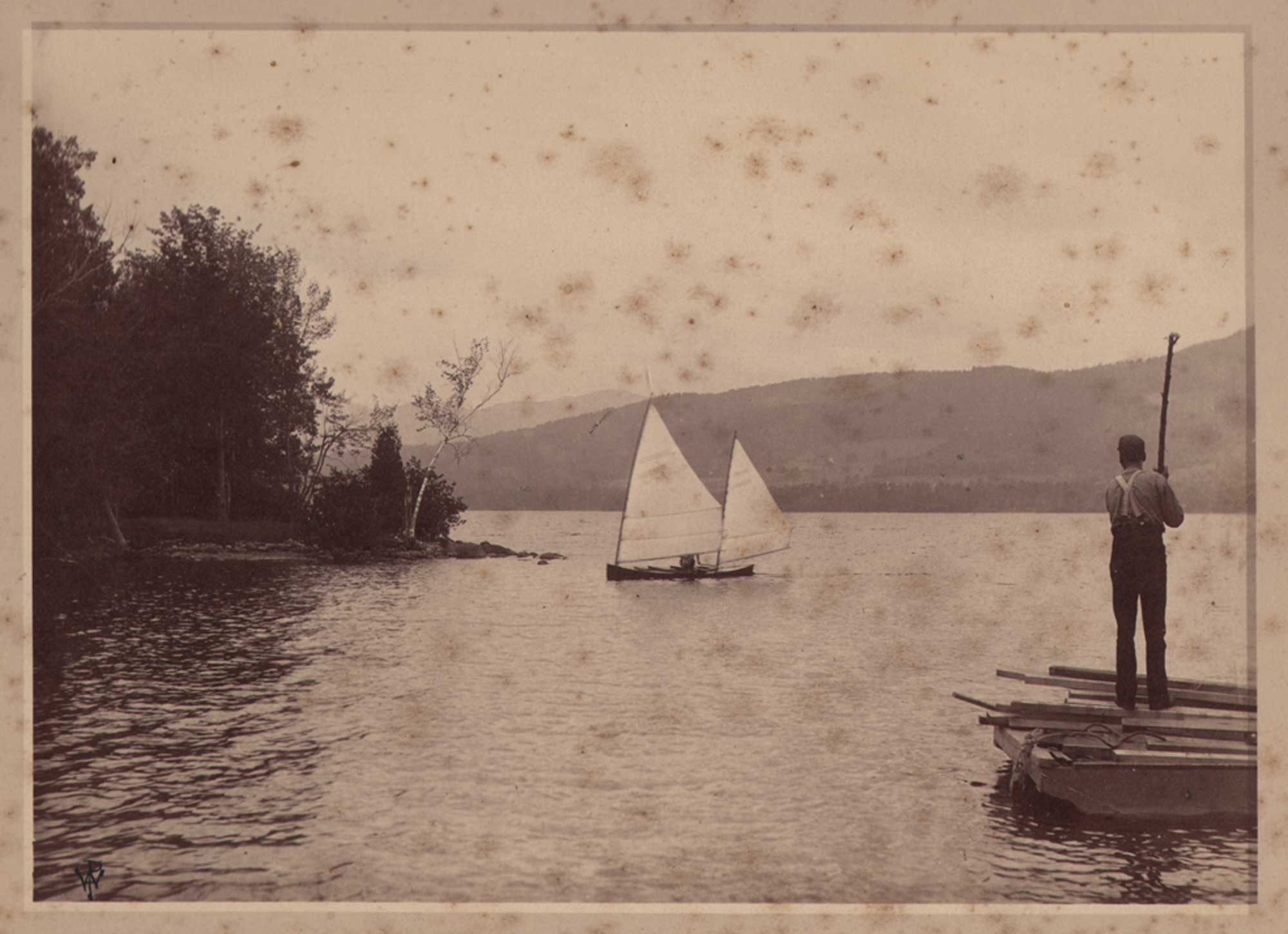
“Canoe Sailing on Lake George”, ca. 1889, bromide print, W. P. Atwood, American, 1853-1954, 12.2 x 16.9 | 20.5 x 26.0 cm | overmat: 27.9 x 35.5 cm. William Preston Atwood was president of the Lowell (MA) Camera Club around the time this marine view of Lake George was taken, with Anthony’s Photographic Bulletin commenting in April, 1889 that “W. P. Atwood, of Lowell Camera Club, had four gems of scenery at Nantucket and Lake George, with particularly fine effects in the clouds. “Marblehead Rocks” and “Summer Afternoon, Lake George” were, in our opinion, the best of a fine exhibit.” The location of the photograph is also significant in the history of the sport of canoeing in the United States. The American Canoe Association states “In 1880, the canoeists who vacationed in the Lake George – Lake Champlain area of New York State recognized the rising tide of interest in canoeing and issued a call for a Convention of Canoeists. The result was the formation of the American Canoe Association on August 3, 1880 on the shores of Lake George, New York by 24 charter members.” From: PhotoSeed Archive
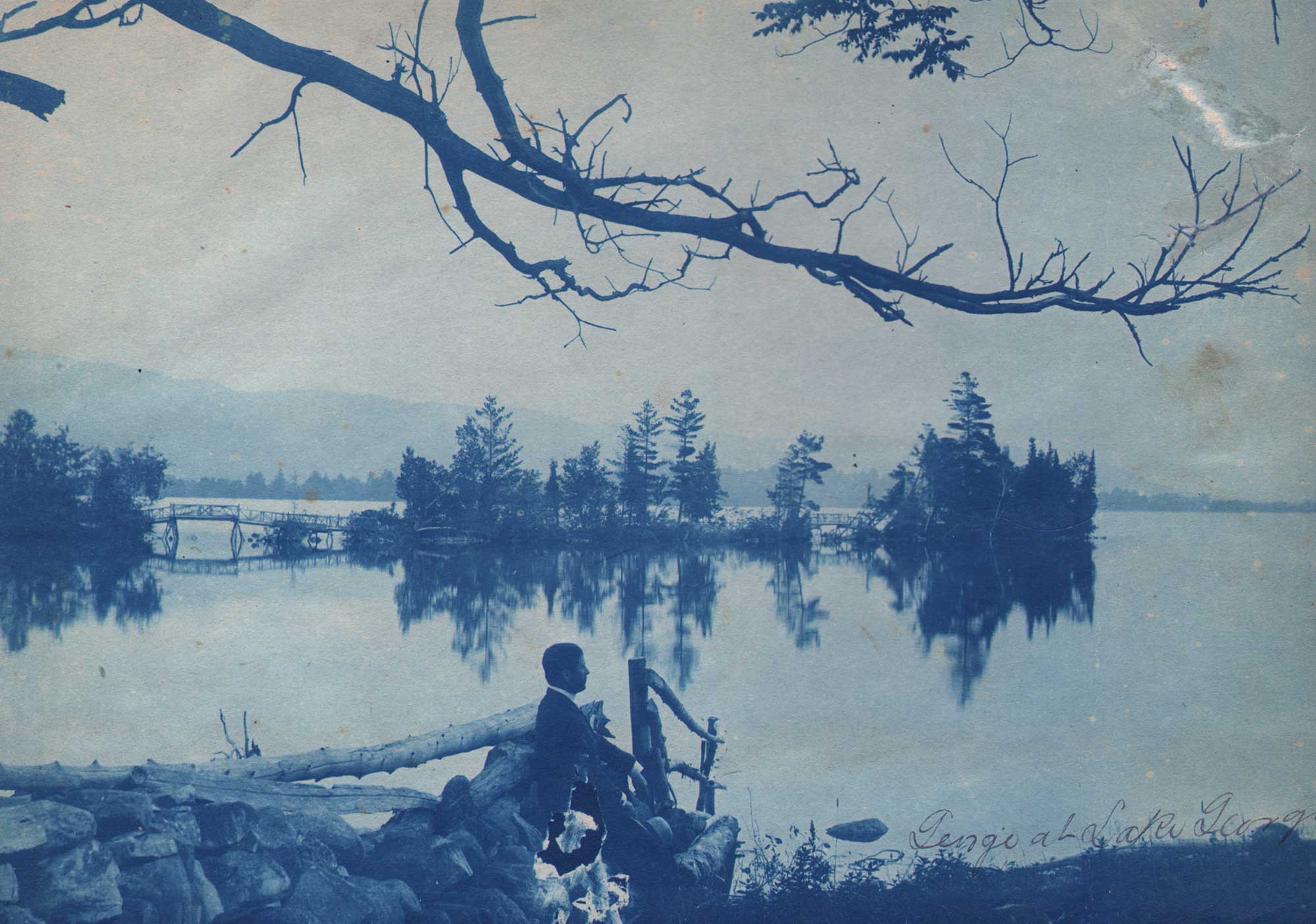
“George at Lake George”, ca. 1900-10, cyanotype print, unknown American photographer, 14.5 x 19.1 cm. Appropriately named George, this gentleman sits with hat by side taking in the (likely early-morning) reflective, glassy surface view of Lake George in upstate New York. In the background, a series of rustic wooden bridges are seen connecting several small islands jutting out into the lake. At the time visitors like George took in the Adirondack views in the late 19th and early 20th centuries, Lake George was more a playground of the rich than for those with limited travel and vacation budgets. This changed drastically after World War II, and today the lake and surrounding Adirondack State Park supports a large summer tourist and residential community. The 32 mile-long narrow lake is dotted with 170 islands, with the majority owned by the state of New York. From: PhotoSeed Archive
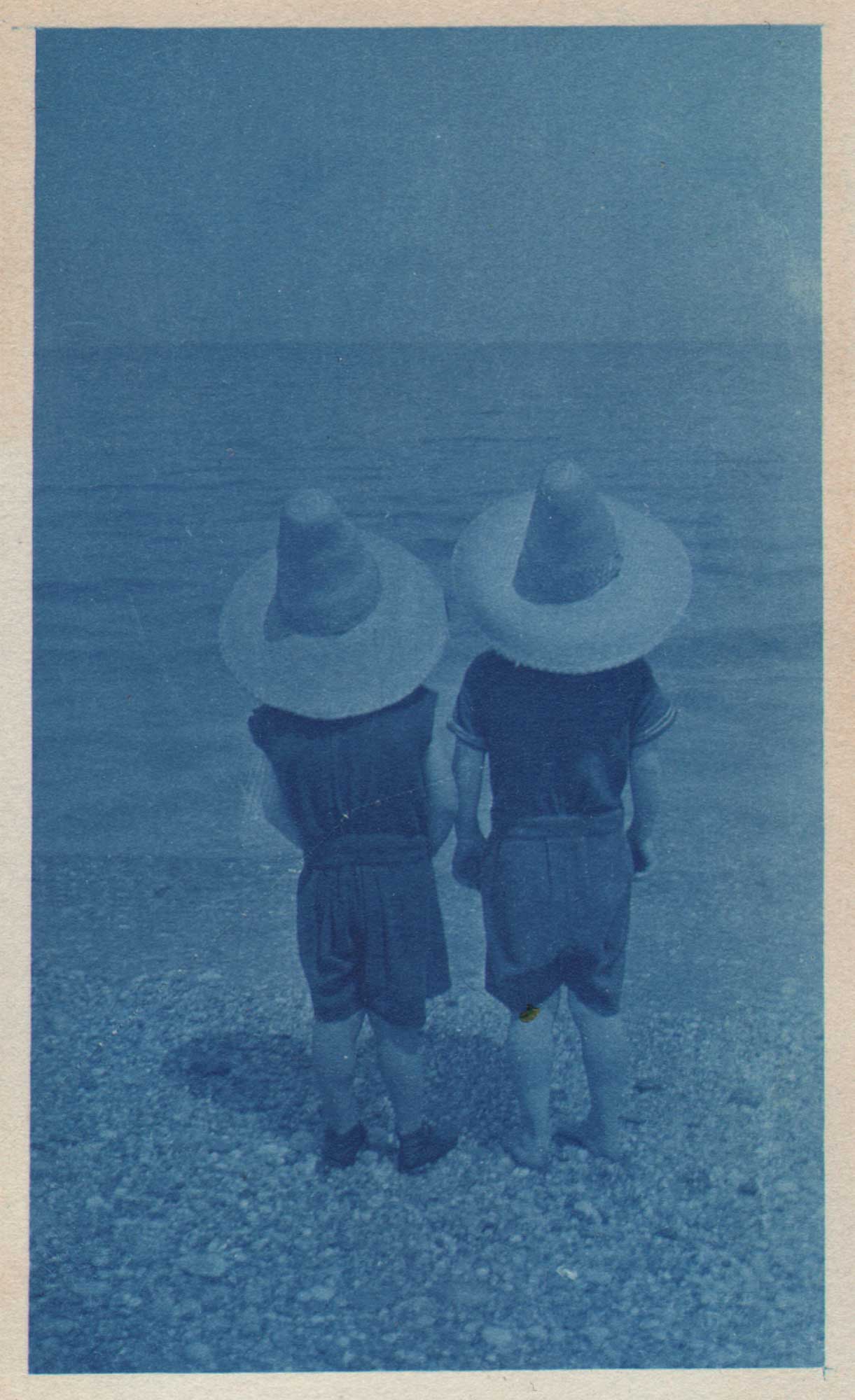
Forget selling those seashells…“Children with Matching Straw Hats at Seashore”, ca. 1905-10, unposted cyanotype divided back postcard, unknown American photographer, 10.4 x 6.1 | 13.9 x 8.8 cm. For children especially, the timeless fascination of staring at the summer sea is enhanced by the matching fancy of identical straw sun hats. From: PhotoSeed Archive
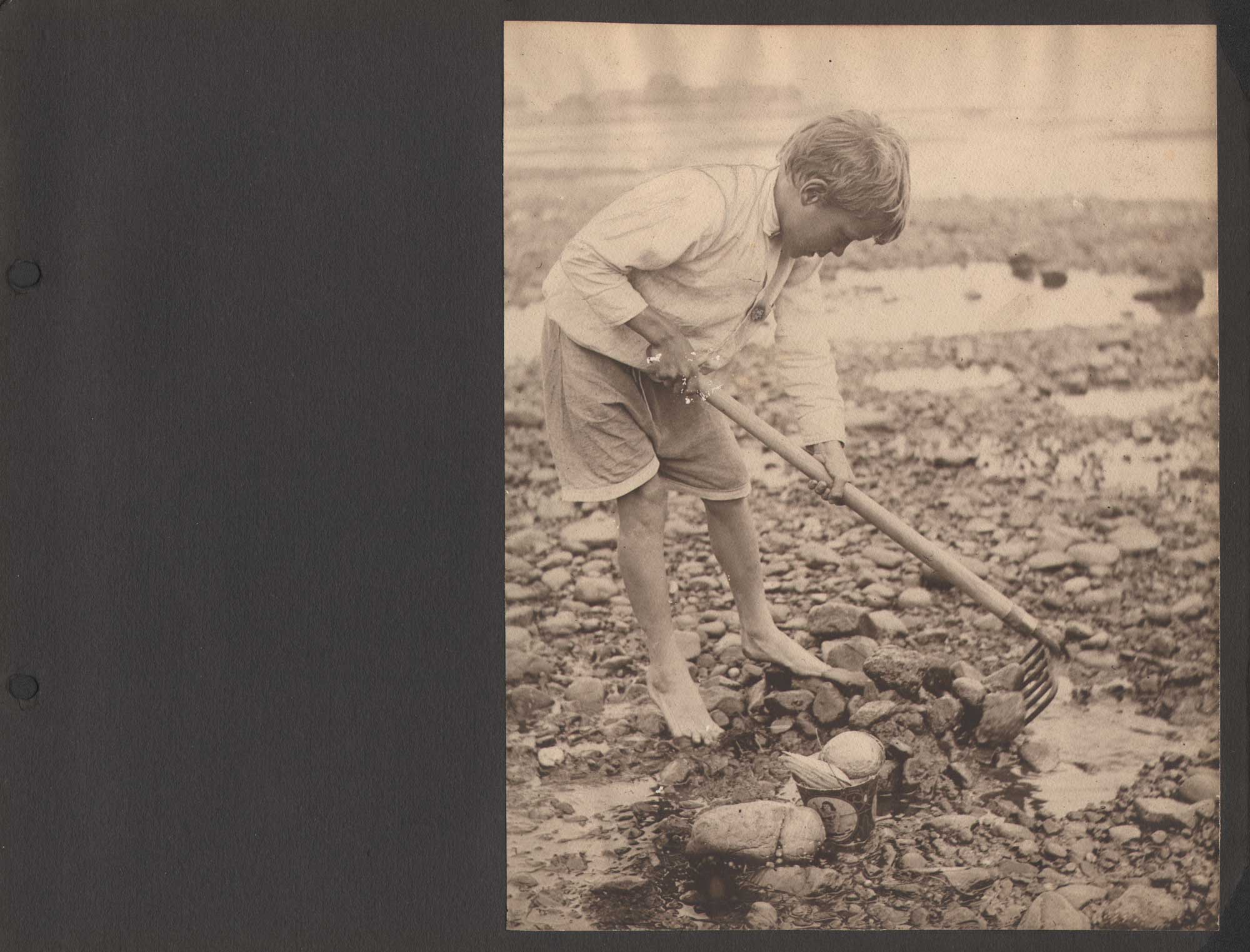
“Child Raking for Clams”, ca. 1910-20, mounted bromide print, Arthur Hammond, American: born England: 1880-1962, 23.5 x 18.5 cm on black-paper album page 25.0 x 32.6 cm. A young boy, believed to be the same subject in Hammond’s study “Child Gazing in Fish Bowl” uses a long-handled rake while searching for clams, with several gathered in a small tin near the subject’s feet. The photograph may have been taken along Boston’s North Shore, with other maritime album images identified as the old Deer Island lighthouse in Boston Harbor and the original building for the Jubilee Yacht Club in Beverly Mass. Born in London, the artist arrived in America at Ellis Island in New York Harbor on July 31, 1909, establishing his own studio in Natick, MA by 1912. In 1920, he authored the foundational book “Pictorial Composition in Photography” and became a leading voice for pictorialism in America through his position as associate editor of American Photography magazine that lasted 30 years from 1918-1949. From: PhotoSeed Archive
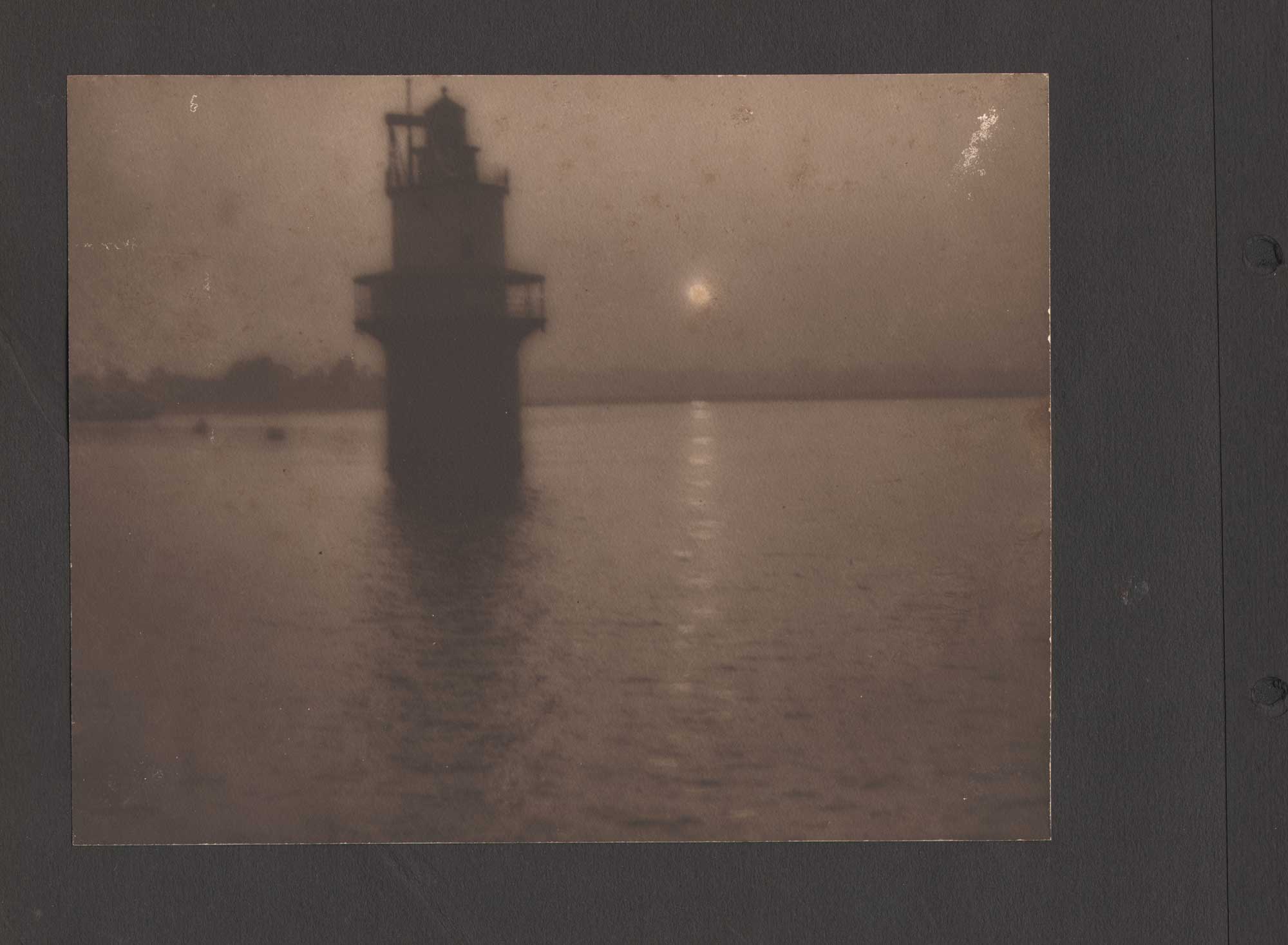
“Deer Island Light, Boston Harbor”, ca. 1910-20, mounted bromide print, Arthur Hammond, American: born England: 1880-1962, 18.7 x 23.9 cm on black-paper album page 25.0 x 32.6 cm. Perhaps an early morning view, with the Sun shrouded by fog on the horizon, the Deer Island Lighthouse emerges from Boston Harbor, firmly planted on a reef extending 1500’ south of Deer Island. Originally a stone beacon when established in 1832, it was replaced by this “sparkplug” type lighthouse in 1890, which survived until being replaced by a fiberglass tower in 1982. Wikipedia states “the 1890 light cost about $50,000. It included a three-story dwelling, a veranda with boat davits, and a circular parapet. The water supply was a cistern in the base of the structure. A spiral staircase ran from the cellar to the top floor. It had a fixed white light, which was changed to flashing red every thirty seconds and then to the present alternating red and white flashes.” From: PhotoSeed Archive
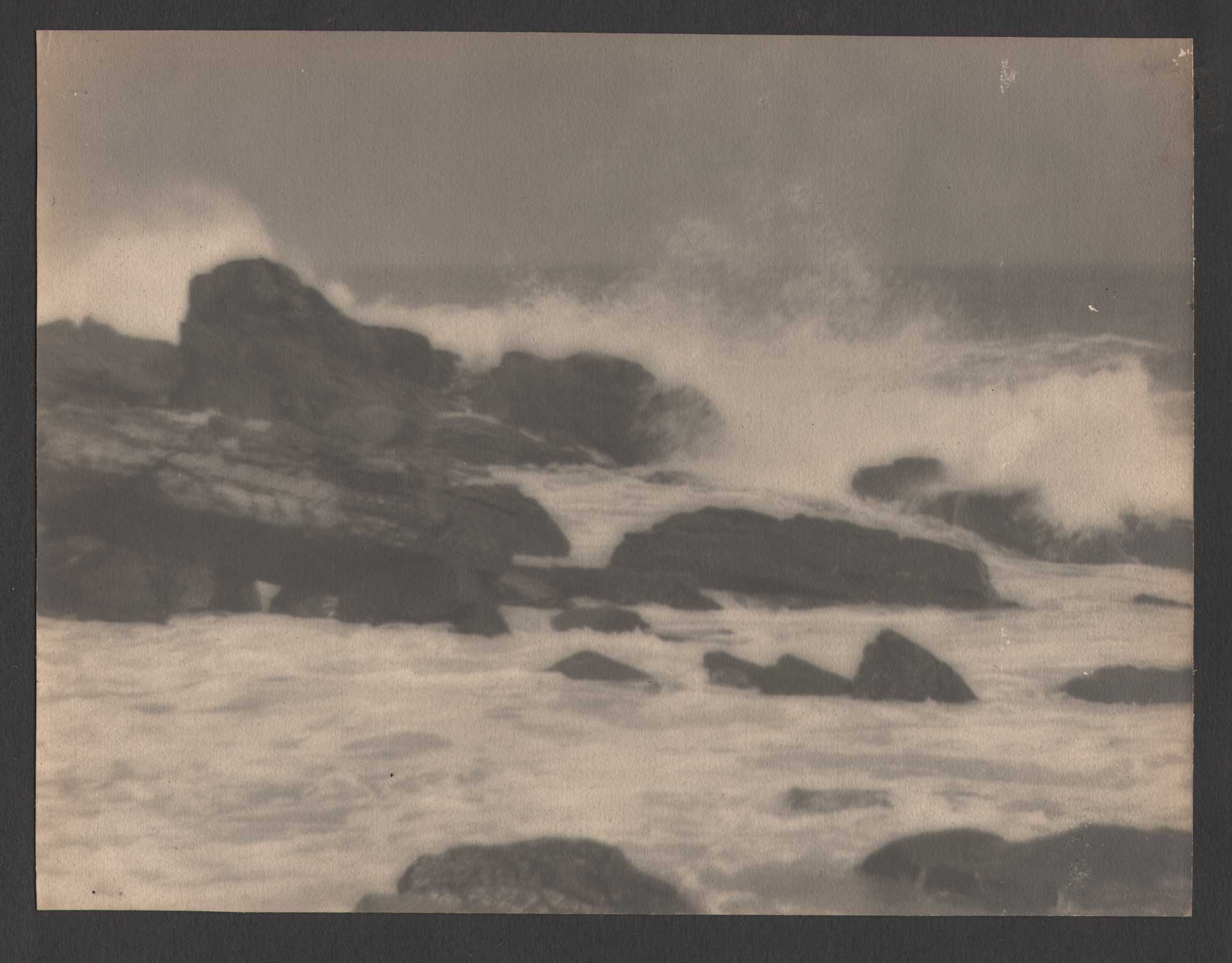
“Waves Crashing on Rocky Coastline”, ca. 1910-20, mounted bromide print, Arthur Hammond, American: born England: 1880-1962, 18.2 x 23.9 cm on black-paper album page 25.0 x 32.6 cm. Large rock formations are buffeted by waves, perhaps in one of Boston’s north shore communities of Marblehead or Gloucester. Born in London, the artist arrived in America at Ellis Island in New York Harbor on July 31, 1909, establishing his own studio in Natick, MA 1912. In 1920, he authored the foundational volume “Pictorial Composition in Photography” and became a leading voice for pictorialism in America through his position as associate editor of American Photography magazine lasting 30 years from 1918-1949. From: PhotoSeed Archive
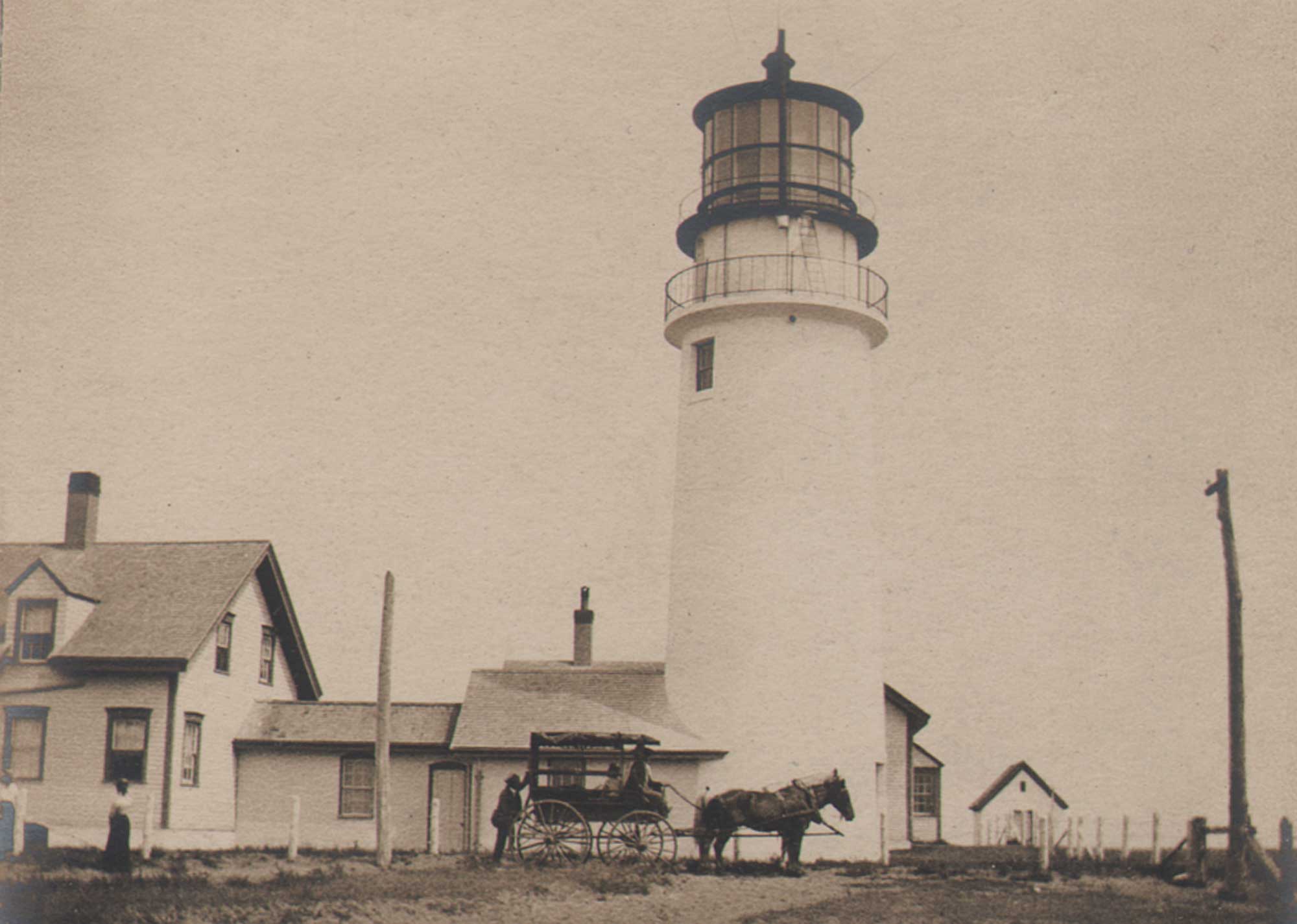
“Highland Light, Truro”, 1900, album-mountain gelatin silver print, Phillip Patterson Wells, American, 1868-1929, 8.2 x 8.3 | 16.3 x 20.9 cm. A horse-drawn carriage prepares to depart from the Truro Lighthouse in the summer of 1900. The current lighthouse “was erected in 1857, replacing two earlier towers that had been built in 1797 and 1831. It is the oldest and tallest lighthouse on Cape Cod.” From a summer album containing Truro images and others by Philip Patterson Wells, who vacationed with his family on Truro. Dr. Patterson was librarian and instructor at Yale Law School for several years, and chief law officer under Gifford Pinchot for the U. S. Forestry Service, 1907-1910, counsel National Conservation Association, 1910-1911, chief law officer U. S. Reclamation Service (Department of the Interior), 1911-1913. From: PhotoSeed Archive
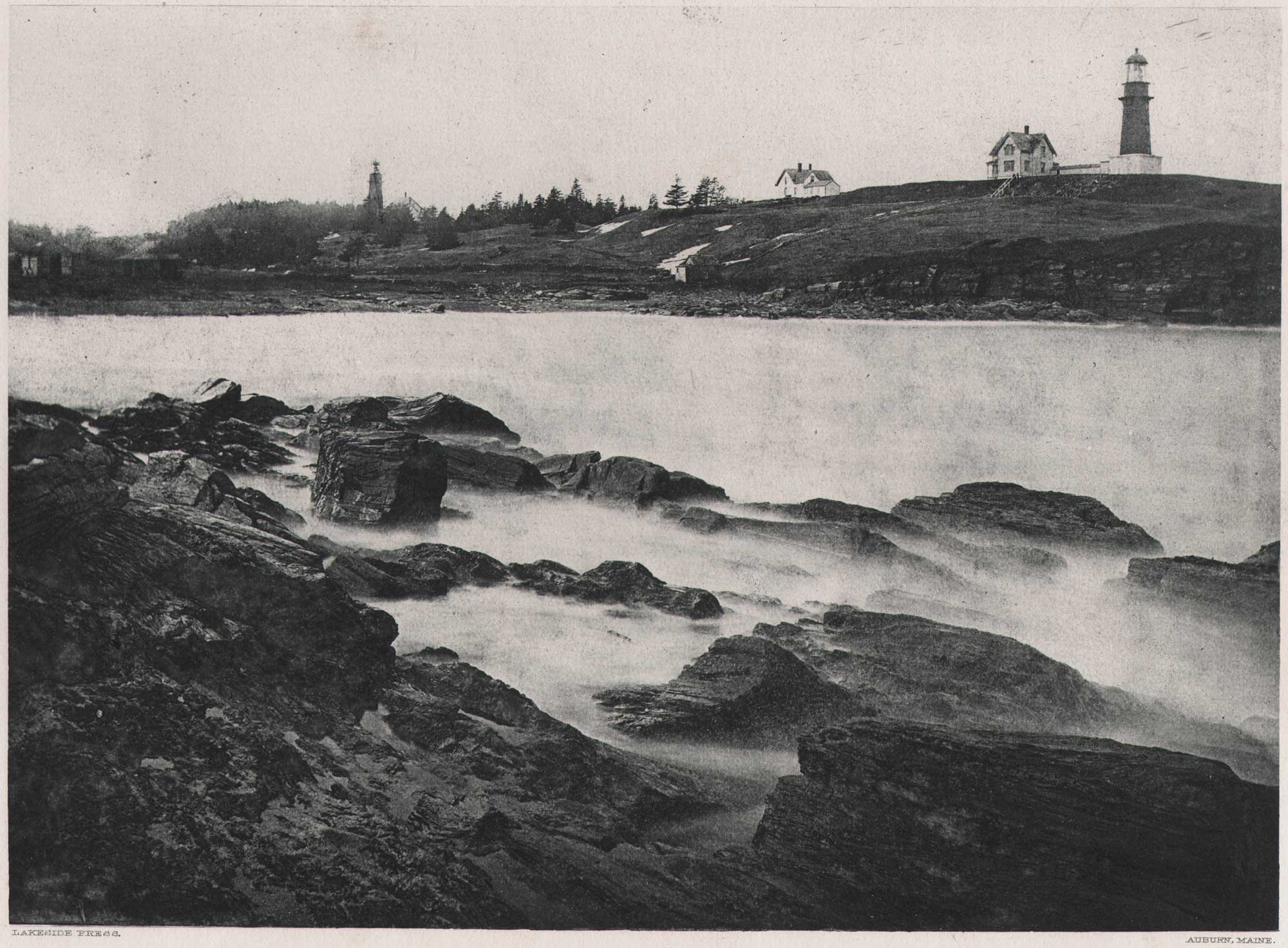
“The Two Lights” 1890, hand-pulled photogravure plate, Charles R. White, American, 13.8 x 19.0 | 21.6 x 29.5 cm. Originally built in 1828 as two rubble stone towers 300 yards (270 m) apart, the Cape Elizabeth lighthouse is located at the southwestern entrance to Casco Bay in the US state of Maine. The lights were replaced in 1874 by “two conical towers made of cast-iron, each 67 feet (20 m) high and 129 feet (39 m) above sea level. Despite its twin beacons, Cape Elizabeth witnessed many shipwrecks.” Only the eastern tower at right still serves as a lighthouse, made famous by American artist Edward Hopper’s paintings “Lighthouse Hill” (1927) and “The Lighthouse at Two Lights”. (1929) Published in the gravure plate volume By the Sea by the Lakeside Press in 1890, The Two Lights was accompanied by the following poem: The waves dash high with tempestuous roar, | Surging in billows adown the Cape shore, | Rocking on reefs the bell buoys to tone, | Mingling in sea mists the fog horns’ trombone; | And where high on the rock-ribbed shore | The Two Light towers their red fires pour, | There at last from turmoil blest, | The waves in ocean’s calm find rest. From: PhotoSeed Archive
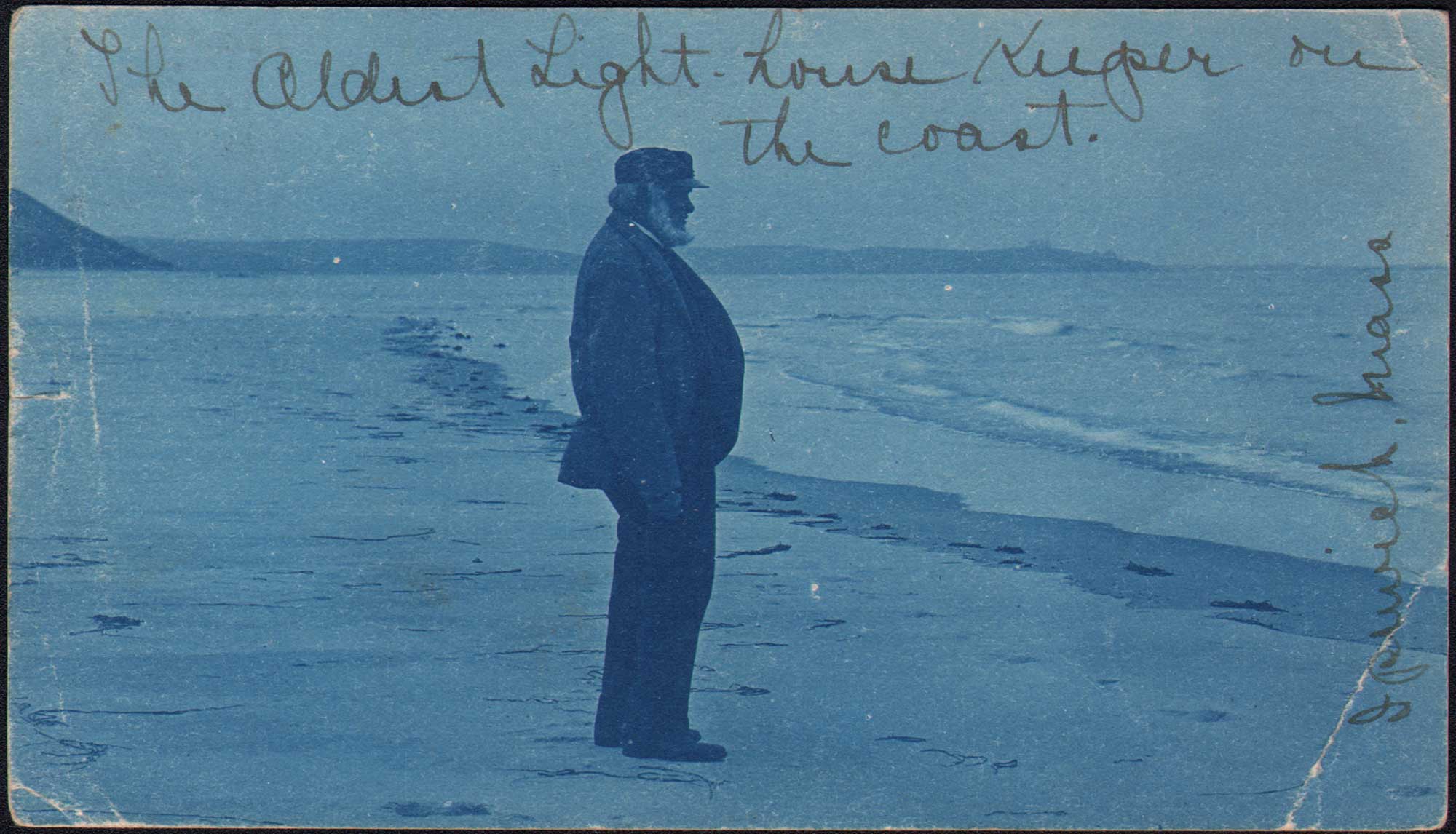
“The Oldest Light-house Keeper on the Coast”, ca. 1895-1900, 1904 posted cyanotype postcard, George G. Dexter, American, 1862-1927, 7.9 x 14.0 cm. Captain Benjamin Noyes Ellsworth, 1813-1902, appointed keeper of the Ipswich lighthouse by US President Abraham Lincoln in 1861, looks out to the sea in Ipswich, Massachusetts. The photograph was taken by Dexter most likely at the very end of the 19th or early 20th century. In the 1896 edition of the Directory of the The Town of Ipswich, the artist took out an advertisement proclaiming himself “Dexter The Photographer”: “The facts that we always guarantee perfect satisfaction, are willing to devote enough time to each sitting; to secure the best results; have one of the most throughly (sic) equipped studios in the state and are always Up-to-Date with new styles, account for our continued increase of work.” From: PhotoSeed Archive
